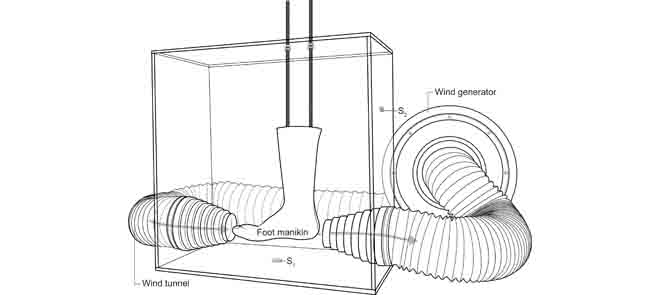An extreme microclimate inside footwear contributes to wear discomfort and performance impairment. A thermal foot manikin system was developed to evaluate the thermal insulation of footwear. The uniqueness of this foot manikin is that it utilizes a specially designed all-in-one flexible heating sheet with uneven distribution of resistive wires to achieve a non-uniform gradient temperature distribution along the foot surface. Three flexible heating sheets with different wire distributions were developed to simulate the local skin temperature for different activity levels, suggesting more realistic measures. The heated foot manikin was enclosed by a silicone `skin’ layer, which provides a soft texture. In addition, it was equipped with phalangeal joint and ankle joint for the ease of wearing various types of shoes. The local skin temperature and the power required to heat the foot manikin were recorded. Five types of footwear were compared; the results show that the leather sneaker provides the best thermal insulation performance, whereas the mesh shoe provides the worst thermal insulation performance in walking and running conditions. The findings also reveal that the toe portion is the coolest zone. This paper demonstrated that the measurements from the developed foot manikin are repeatable and versatile, which is useful for optimizing the thermal comfort of the footwear.
Tang K.P.M.
Ng S.P.


